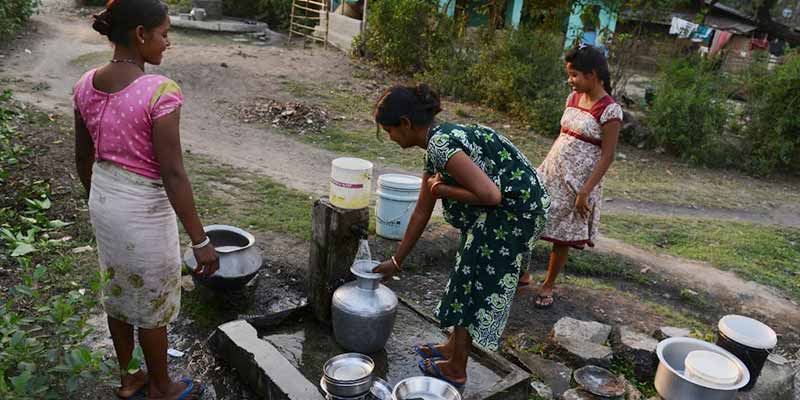- India
- Oct 09
Goa becomes first ‘Har Ghar Jal’ state
Goa has become the first state in the country to provide functional household tap connections (FHTCs) to every household (Har Ghar Jal) in the rural areas under Jal Jeevan Mission.
Goa CM Pramod Sawant announced that all rural households in the state now have piped water supply. Under this mission, the state government provided piped water supply to 2.30 lakh rural households.
How Goa achieved this target?
In June, Union Minister Gajendra Singh Shekhawat wrote to Goa CM expressing happiness on the state’s Annual Action Plan (AAP) to provide 100 per cent FHTCs in rural areas by 2021 and extended full support for the implementation of the mission.
Accordingly, fund allocation to Goa was increased to Rs 12.40 crore.
Also, through the convergence of various programmes like MGNREGS, SBM(G), 15th Finance Commission Grants to Panchayat Raj Institutions, District Mineral Development Fund, Compensatory Afforestation Fund (CAMPA), CSR Fund, Local Area Development Fund, etc the state achieved strengthening of drinking water sources, water supply, grey water treatment & reuse and operation & maintenance.
The two districts of Goa — North Goa with 1.65 lakh rural households and South Goa with 98,000 rural households in 191 Gram Panchayats — are fully saturated with piped water supply.
To strengthen the water testing facilities, the state is in process of getting 14 water quality testing laboratories.
The state government now plans for a sensor-based service delivery monitoring system to monitor the functionality of water supply on a regular and long-term basis.
What is Jal Jeevan Mission?
The central government assistance to states for rural water supply began in 1972 with the launch of Accelerated Rural Water Supply Programme. It was renamed as National Rural Drinking Water Programme (NRDWP) in 2009.
The government restructured NRDWP into Jal Jeevan Mission in August 2019.
It aims to provide safe and adequate drinking water through individual household tap connections to every rural household in the country by 2024.
Various states/UTs have also committed to achieve the goal of the Mission well before 2024.
How is it being implemented?
States were requested to undertake a revalidation exercise of baseline data, as per which there are 19.04 crore rural households in the country.
Around 3.23 crore households are already provided tap connections. Remaining 15.81 crore households are to be provided with tap connections. Thus, the objective is to provide water to these households in a time-bound manner while ensuring the functionality of already provided connections.
This means 3.2 crore households have to be covered every year, that is 88,000 tap connections on a daily basis.
The key objective of the Mission is universal coverage and emphasis is on the principle of ‘equity and inclusiveness’. It means every family in the village gets tap water connection in their household and ‘none is left behind’.
Accordingly, states are giving priority to SC/ST majority populated villages, aspirational districts, villages in drought prone and desert areas and quality-affected habitations.
Special focus is given to the districts affected with Japanese Encephalitis/ Acute Encephalitis Syndrome (JE-AES) which is one of the reasons behind infant mortality in the affected districts.
Around 3.01 crore households are there in 61 JE/ AES endemic districts of Assam, Bihar, Tamil Nadu, Uttar Pradesh and West Bengal.
Potable water supply to water quality-affected habitations is also a top priority under JJM as the ill-effects of fluorosis and arsenicosis are to be reduced.
Manorama Yearbook app is now available on Google Play Store and iOS App Store

